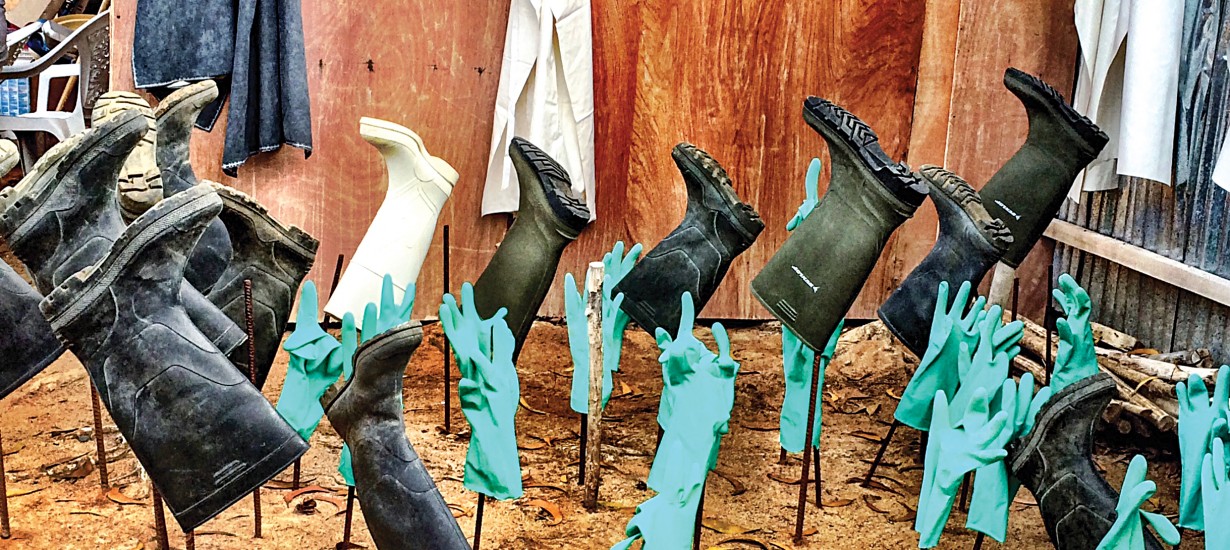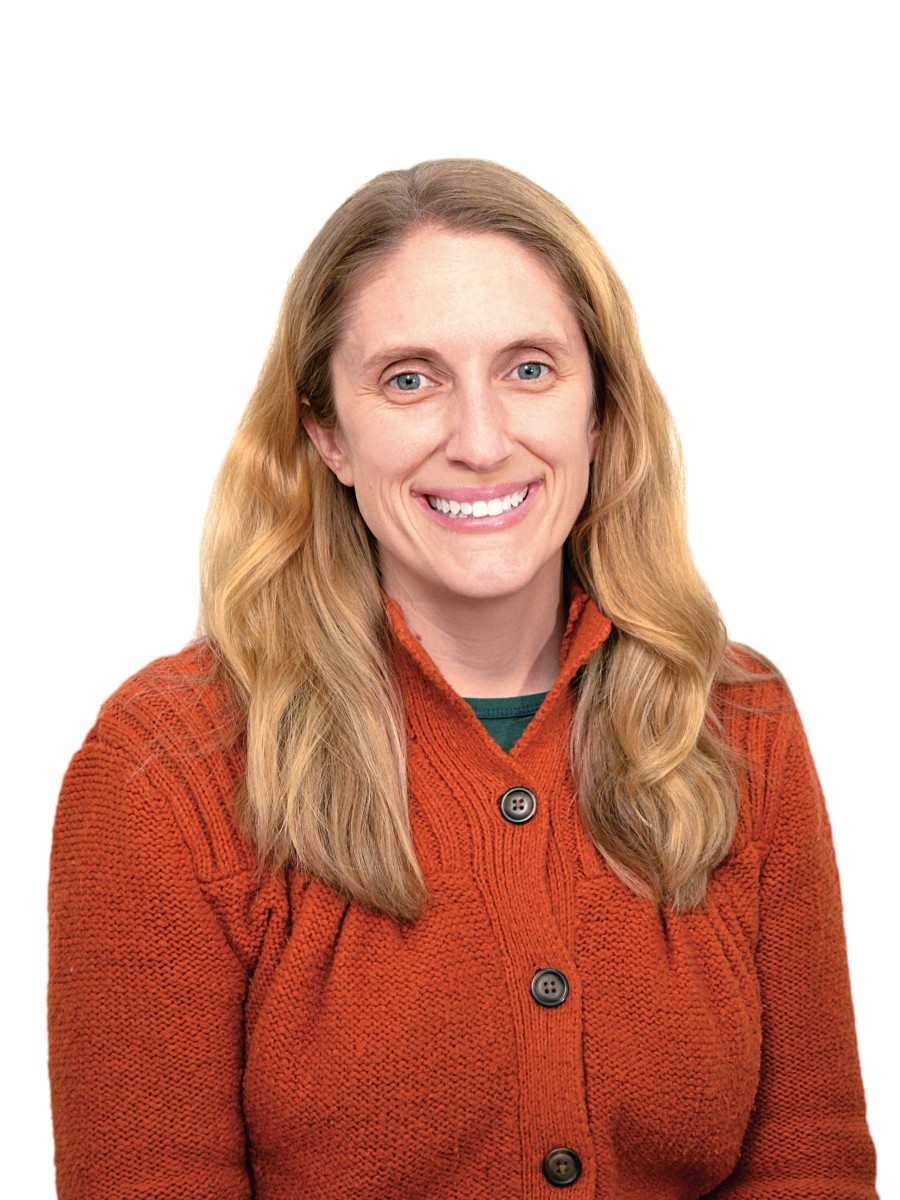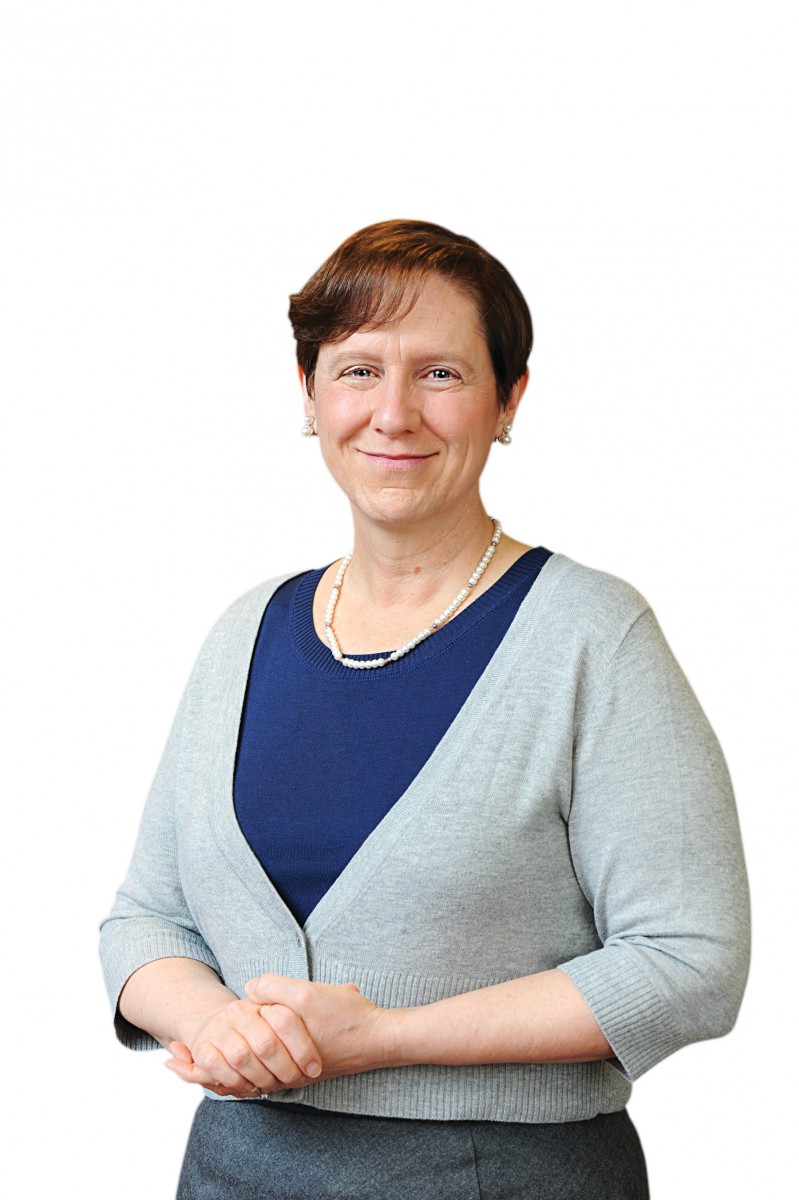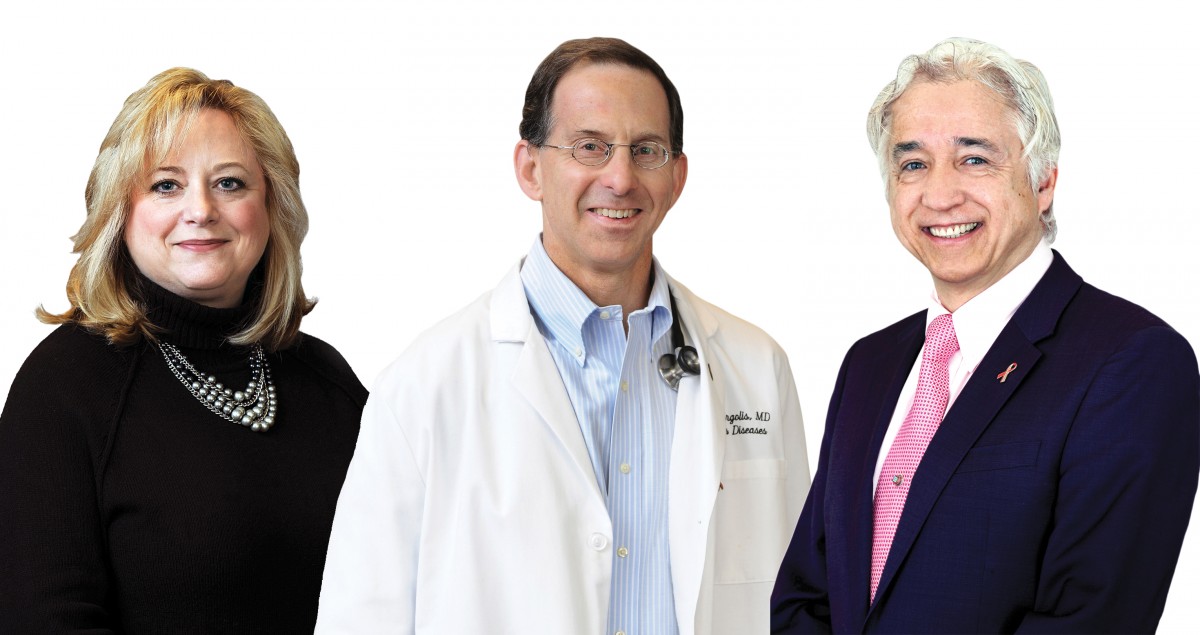Rolling Up Their Sleeves and Doing It

Carolina is an internationally recognized leader in infectious disease research; many of our scientists tackle the evolution, prevention and treatment of infectious diseases. Here are just a few of their stories.

Kimberly Porter ’08: Her first employer found that she lacked a couple of the requisite job skills — little things like how to don body armor, fire an AK-47 or drive a car in reverse at high speed.
Applied Epidemiology
For all that Kimberly Porter ’08 (MSPH, ’10 PhD) learned about epidemiology while studying at UNC’s Gillings School of Global Public Health, her first employer found that she lacked a couple of the requisite job skills — little things like how to don body armor, fire an AK-47 or drive a car in reverse at high speed.
The Centers for Disease Control and Prevention was happy to fill in the gaps.
To be sure, the training Porter received was only precautionary, to be used in the unlikely event that her work for the CDC put her in harm’s way. But it provides a small window on the field of applied epidemiology, where epidemiological research — studying the distribution and determinants of disease — grapples with the most pressing real-life public health problems in North Carolina and around the world. It is in this field that three scientists with ties to UNC — Porter, state epidemiologist Megan Davies ’91 (MD) and public health professor Steve Meshnick — are making their mark by trying to detect, predict and mitigate the harm caused by some of the world’s deadliest diseases.
After earning her degree, Porter joined the CDC’s Epidemic Intelligence Service, which took her out of a UNC lab and into the field to do outbreak response and disease surveillance. The EIS was formed in 1951 in response to Cold War fears of biological weapons. Today, the service’s “disease detectives,” who sign up for two-year tours of duty, are tasked with investigating disease outbreaks wherever they occur, from food poisoning in the middle of America to Ebola in Africa.
Porter’s first stop as a member of the program was Alaska, where she investigated outbreaks of shellfish poisoning and drug-resistant staph infections. She also got a crash course in disease surveillance, the process of gathering data — often huge amounts of it — and using it to predict and prevent the progression of a disease. “I discovered how difficult it is to make sure your surveillance is sensitive enough [to detect disease],” she said, “and how difficult it is to get good data.”
After Alaska, she returned to the CDC’s Atlanta headquarters and joined its polio program. That posting takes her twice a year to Nigeria, one of the three countries in the world where polio transmission has never been halted.
Porter also traveled to Kenya when polio broke out in the Horn of Africa, and she has been to Afghanistan three times. That country hopes to introduce a program of rubella vaccination in the near future; she is helping health professionals there figure out how to measure the campaign’s effectiveness after it gets underway.
Last fall, Porter was in Sierra Leone helping the country respond to Ebola as one of 10,000 CDC workers involved in the Ebola crisis. Porter acknowledges “the risky element” of her work in some of the world’s most dangerous places.
“You don’t go traipsing off to these places ignoring risk. It’s also important not to overstate the risk. You just have to get off the plane, pretend you feel great for a few minutes, and then feel incredibly lucky to have the opportunity to do something meaningful in a place where there is such need.”
Mapping Malaria

Steve Meshnick
The Democratic Republic of the Congo, where Steve Meshnick conducts research, would make anyone’s short list of countries in need. Despite the world’s richest supply of minerals, the Central African country is wracked by poverty, malnutrition, pneumonia and malaria. Africa’s second-largest nation has the fewest miles of paved roads on the continent.
“People didn’t realize the lack of infrastructure in places like Africa,” Meshnick said. “It was possible to ignore it. But now we know this is where the worst diseases start — places where people are poor, where there is a lot of animal contact.”
One of Meshnick’s primary research projects is using molecular tools to understand how malaria, antimalarial drug resistance and HIV evolve and spread in the DRC. His laboratory has mapped malaria there using blood samples gathered at 300 sites during a 2007 demographic health survey. The method they used, molecular assays of blood spots, is more sensitive than existing diagnostic tests. Creating such a map can help researchers determine how far the parasites migrate and how long it takes them to do so, among other questions.
Meshnick’s laboratory also examines blood and tissue samples from malaria- and HIV-infected pregnant women to understand the process of mother-to-child transmission. And they do work on the home front, including studying how well tick-resistant clothing protects outdoor workers in North Carolina.
Meshnick says that one of the biggest barriers to containment is the early identification of cases. “No one can find out who is sick until it is too late,” he said, speaking about the Ebola outbreak in West Africa. “By the time [those countries] knew, there were too many cases and not enough resources to respond.
“Malaria disappears when economy and levels of education improve.” That, and resources. “It will disappear.”

Megan Davies ’91 has to keep a wary eye on what’s next. Will chikungunya, a painful mosquito-borne disease that already has leapt from Africa to the Caribbean, soon crop up in North Carolina?
Preparing for the Worst
Along the way to her current role as epidemiology section chief at North Carolina’s Department of Health and Human Services, Megan Davies ’91 (MD) also served as an epidemic intelligence service officer and then as a medical epidemiologist for the CDC. She investigated everything from a salmonella outbreak in a Missouri town — bird droppings in the water tower, as it turned out — to the post-9/11 anthrax attacks. “I liked the detective work, the mystery, the medical part of the intervention and figuring out how to stop [the outbreak] urgently,” she said.
The Asheville native, who attended Warren Wilson College as an undergraduate, joined the CDC after working as a family practitioner at a community health clinic in Hendersonville, one that largely served migrant apple pickers. There, she says, she “saw a lot of different preventable diseases and injuries: Type 2 diabetes, domestic violence, hypertension. And I thought that there’s got to be a better way to get this across other than one by one.”
Applied epidemiology offered her the better way she sought. After four years with the CDC, she was assigned to the N.C. Division of Public Health in 2002. From there, she worked her way into her current position as state epidemiologist in charge of preparing the state for emerging diseases, infections and other threats, natural or manmade.
Plan and preparation in response to the Ebola threat have occupied much of her time in recent months. Although Ebola has not emerged in North Carolina, Davies says that the amount of attention being paid to it is appropriate. “It’s important to have respect for people’s fear, to understand what is frightening and to share as much information as you can about what they’re afraid of.”
But she also has to keep a wary eye on what’s next: For example, will chikungunya, a painful mosquito-borne disease that already has leapt from Africa to the Caribbean, soon crop up in North Carolina? And if so, how should the state respond?
Part of her work entails training doctors and other clinicians to look out for the right symptoms and ask the right questions: Where have you traveled recently? What’s your occupation? Have you had any contact with animals? One challenge: “Doctors are trained [to recognize infectious disease symptoms], but they are also trained to see a lot of people in a short amount of time.”
Another challenge is communication. Messages to the state’s clinicians about symptoms to look out for can easily get buried in their inboxes. “We’re always trying to do that better. It’s so hard to get the attention of clinicians because so much is coming at them all the time.”
She also wants people to understand that for the more common infectious diseases — the flu, for example — common sense can make for good preventive medicine.

Angela Kashuba, David Margolis ’02 and J. Victor Garcia-Martinez
Breakthrough: HPTN 052
The danger and the drama of infectious diseases are out in the field, where the treatment and the intervention takes place. But many questions that are critical to the cure can only be answered in the laboratory.
In UNC’s Eshelman School of Pharmacy, Angela Kashuba is trying to find where the drugs that can treat HIV travel and accumulate in the body.
For Kashuba’s work on HIV prevention and cure, one of the central research questions is whether antiretroviral drugs are getting to where HIV goes in the body — which is to say, everywhere. “Any drug has to get to where HIV is hiding,” she said. “But we don’t know if and how drugs are getting there.”
Kashuba did foundational work on the HPTN 052 clinical trial, which established that, when people with HIV take antiretrovirals, they are far less likely to transmit the disease to their partners. She studied the virology of HIV in the genital tract and which drugs concentrated there. Now, she works with researchers, including David Margolis ’02 (MPH) and J. Victor Garcia-Martinez in the School of Medicine and David Muddiman at N.C. State, to develop novel ways of mapping HIV and antiretroviral distribution. Using laser technology, they can measure the presence in tissue of drugs with very low molecular weights. Then, they can create “heat maps” that overlay concentrations of HIV in tissue.
The treatment implications of such maps are enormous. Antiretrovirals are quite effective in the treatment of HIV, usually able to reduce the viral load in the body to undetectable levels. But as soon as the drug regimen is stopped, the virus springs back into action — meaning that people with HIV need to take drugs for their entire lives or risk re-emergence of the disease. But if you know where the drug needs to go and in what amounts, you can work on ways to get it there. Kashuba’s research could help the development of targeted drugs that can flush the virus out of the body entirely: kill the initially infected cells, stop replication and protect uninfected cells.

Ralph Baric
What Mice Can Tell
Ralph Baric, a professor of epidemiology in the Gillings School of Global Public Health and professor of microbiology and immunology in the medical school, is working with collaborators across campus and the country to develop mouse models that mimic how Ebola and other deadly viruses interact with human genetics.
The coronaviruses he studies take their name from their spiky crown but are better known to the public by some of their scary acronyms: SARS, or severe acute respiratory syndrome; and MERS, or Middle East Respiratory Syndrome. One of the troubling aspects of these viruses is how they spill over and try to take hold of new hosts, then fade away, only to return a few years later, this time resistant to the old vaccines. Baric studies how coronaviruses cause disease, replicate, move between species. One of the end goals of his research is to develop broad-based vaccines to wipe out these shape-shifting viruses.
Of particular interest to Baric is how viruses interact with the genetics of the host — an interaction, he says, that has a big impact on disease course and outcome. Genetics may explain why some people get a particular strain of flu while others do not, or why some run fevers, some get sick to their stomachs and still others do not survive.
The Collaborative Cross Mouse Resource, a global initiative led by UNC’s Fernando Pardo Manuel de Villena to develop research mice that better mimic human beings, started with eight lines of mice, cross-bred again and again with a goal of creating 250 different lines of mice to approximate human genetics. Baric and other researchers then study what happens when the lines are exposed to a given virus.
Baric and his colleagues announced last fall that they had developed a mouse that could effectively model how Ebola attacks the human body. The new mouse model paves the way for faster, better testing of drug therapies and vaccines for Ebola.
The next step for Baric and other researchers is to start mapping the human genetics at work in Ebola outcomes.
Darv Johnson ’93 is a freelance writer based in Chapel Hill.
See also: Tenacity
